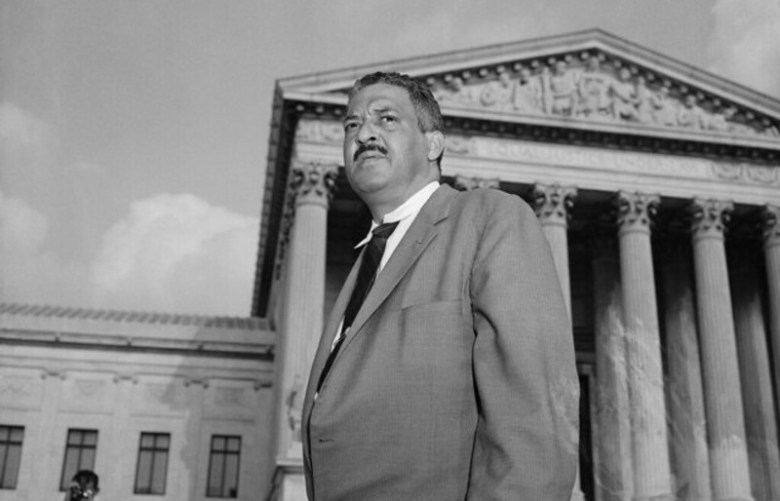
This year on May 17 we recognize and honor the impact of the landmark Supreme Court ruling of Brown v. Board of Education of Topeka which occurred 70 years ago, in 1954.
Brown paved the way for school integration, with the decision that struck down the prevailing doctrine known as “separate but equal.”
Delivered by U.S. Supreme Court Justice Earl Warren, Brown was endorsed by a unanimous 9-0 Supreme Court decision that sent a powerful message across the country that school segregation was unlawful and violated the Equal Protection Clause of the 14th Amendment of the Constitution.
The ruling overturned the 1896 Plessy v. Ferguson court decision that held that separate but equal was legal as long as facilities and staff were substantially equal in quality.
But Plessy was nothing more than an effort to keep segregation alive and essentially ignored the inherent racism at its core.
The 1954 Brown case rested upon the ability of a Black student to attend a white school close to the student’s home, while the school for Black children required busing — even though busing was free and the quality of both Topeka, Kansas schools was said to be basically equal.
A class action lawsuit was filed by the Brown family and other families affected by separate but equal, claiming it was segregation at its most basic. A Kansas U.S. District Court ruled against the Browns, citing Plessy, and the case was appealed to the U.S. Supreme Court.
The case was brought to the Supreme Court by Thurgood Marshall, who later served from 1967 until 1991 as the first Black Supreme Court Justice.
Before the 1954 decision, integration was forbidden in 17 southern states.
Brown v. Board of Education was a consolidation of five lawsuits, all of which were sponsored by the NAACP, against school districts in Delaware, the District of Columbia, Kansas, South Carolina and Virginia.
According to the Legal Defense Fund, “The Kansas case was unique among the group in that there was no contention of gross inferiority of the segregated schools’ physical plant, curriculum, or staff.”
Launched under the leadership of Marshall in 1940, the Legal Defense Fund is a civil and human rights law firm that was created “at a time when the nation’s aspirations for equality and due process of law were stifled by widespread state-sponsored racial inequality.”
The five cases representing communities from across the country were: Briggs v. Elliott, Bolling v. Sharpe, Brown v. Board of Education of Topeka, Davis v. County School Board of Prince Edward County (VA), and Gebhart v. Belton.
On May 31, 1955, another unanimous court decision, referred to as Brown II, instructed states to begin desegregation plans “with all deliberate speed,” according to the National Archives.
Despite widespread resistance at the time to full integration, the Legal Defense Fund calls Brown “the case that changed America” and was “a major catalyst for the civil rights movement, making possible advances in desegregating housing, public accommodations, and institutions of higher education.”
According to the fund, “The decision gave hope to millions of Americans by permanently discrediting the legal rationale underpinning the racial caste system that had been endorsed or accepted by governments at all levels since the end of the nineteenth century.”
Yet civil rights organizations including the fund acknowledge that there is still much work to do.
Many factors still exist today that provide less than adequate educational opportunities for underserved populations, one of many is segregation by zip code.
“Even today, the work of Brown is far from finished,” according to the Legal Defense Fund. “Over 200 school desegregation cases remain open on federal court dockets; LDF alone has nearly 100 of these cases. Recent Supreme Court decisions have made it harder to achieve and maintain school desegregation.
“As a result of these developments and other factors, public school children are more racially isolated now than at any point in the past four decades.”
Moving forward means recognizing and learning from the past.
To assist students, parents and educators, the San Diego County Office of Education offers online resources, reading lists, teaching tools and lesson plans.
SDCOE has compiled a number of resources to help parents and educators discuss this historic event with their children and students, including: for grades 5-12, for grades 5-12, for grades 6-12, for high school age.
This is not just Black American history — it’s American history. We as a society have an obligation to teach all children — of all colors, backgrounds and religions – about the critical importance of this Supreme Court decision.
Brown v. Board of Education was a milestone moment for our country. Its significance in understanding our country’s past struggles cannot be overstated.
Where we were before Brown, where we were after the ruling, and where we are headed now continue to define its relevance to America’s past and future.
Opinion columnist and education writer Marsha Sutton can be reached at suttonmarsha@gmail.com.

